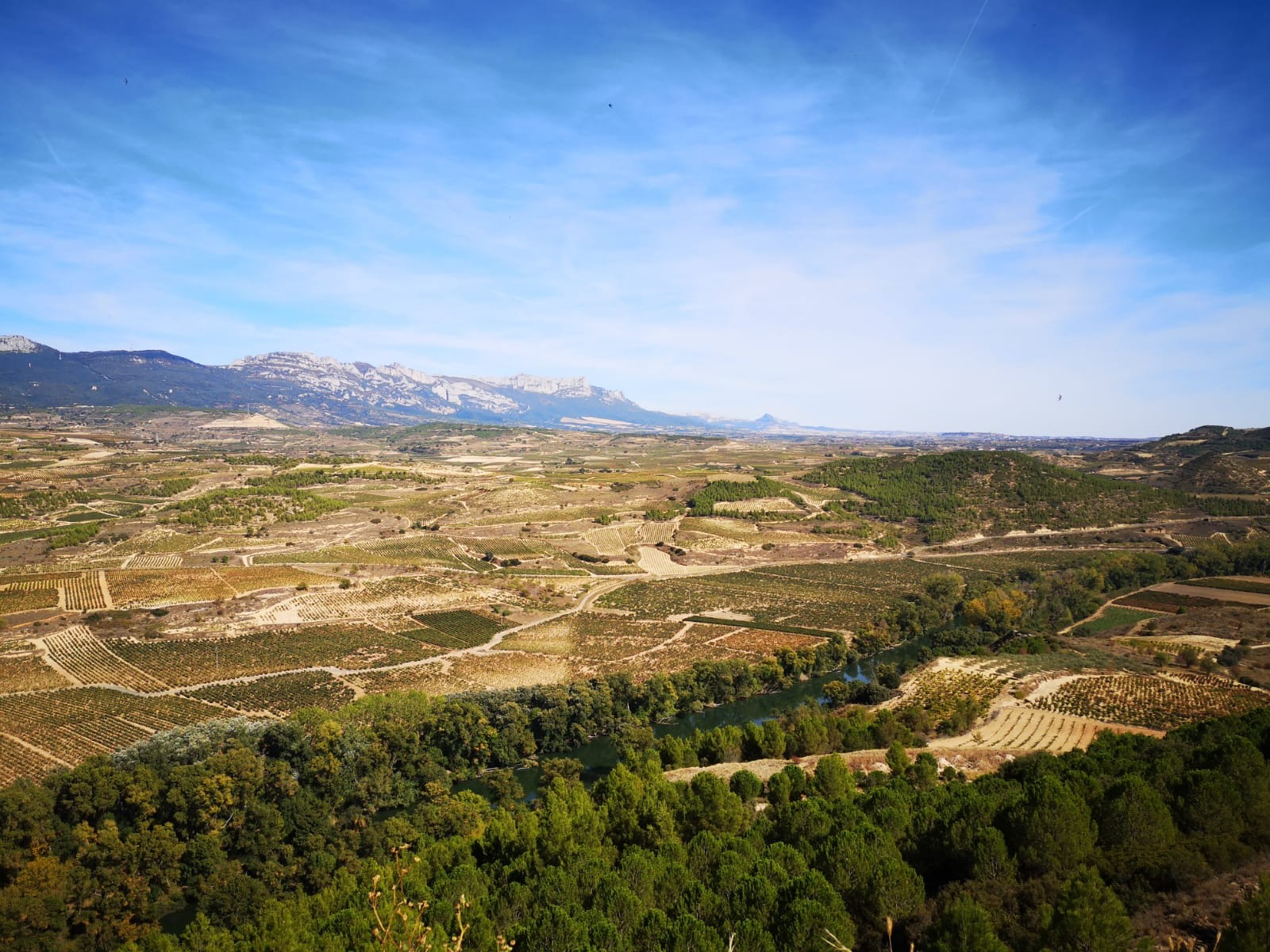CVNE Rioja Trip – Chris Kelly
Last week I travelled to Rioja to visit CVNE, Vine Real and Contino as a guest of the UK importer, Hatch Mansfield, to sample the wines and learn more about the region and these famous estates.

Last week I travelled to Rioja to visit CVNE, Vine Real and Contino as a guest of the UK importer, Hatch Mansfield, to sample the wines and learn more about the region and these famous estates.
Our visit commenced with lunch at CVNE’s impressive winery and cellars in beautiful Haro. As an aperitif, we sampled the fascinating ‘Monopole’, a unique white wine that blends white Rioja and a touch of sherry to add body and texture. It’s a combination that shouldn’t work but comes together surprisingly well in a wine of harmony, balance and complexity. Next came a bottle of the excellent and still very youthful 2007 Imperial Grand Reserva Rioja, and we finished with a real treat, the 1939 Corona. A botrytised semi-sweet wine that was made in 1939 and then forgotten in a barrel for 50 years before being bottled in the 1980s, it is utterly unique and incredible to taste. Also impressed was The Wine Advocate’s Luis Gutierrez, who awarded it. Perfect 100-points.
After lunch, we moved to the stunning barrel room, complete with an iron frame commissioned by Gustave Eiffel that holds the roof in place. Here we sampled a vertical of the Imperial Gran Reserva, one of Rioja’s most important wines, noted for its structure, powerful, bold fruit and consistent excellence.
It didn’t disappoint, with each of the 2016, 2015, 2014, 2012 and 2011 all displaying the trademark Imperial vertical structure, perhaps because of the high proportion of Graciano, while demonstrating the nuances of each particular vintage. The 2012 and newly-released 2016 were real standouts, but you would be delighted to have any in the cellar.
After an incredible lunch – at an 11th-century castle recently acquired by CVNE, and being carefully renovated – our next visit was to Vina Real. Also owned by CVNE, it differs from Imperial as it’s from Rioja Aleveza and the wines are more delicate, ethereal and gastronomic in style.
Another deeply impressive line-up of the Gran Reserva Rioja was sampled, all of which captured the spirit of Vina Real. Again the 2016 was superb, with the 2014 also excellent. We were also treated to a bottle of the 1981 Rioja Reserva vintage from Vina Real’s deep cellars, and it was a wonderful experience. Complex aromatics leap from the glass, with plenty of acidity on the palate, caramel notes that come with 40 years of maturity, and an impressive, expansive finish.
Our trip concluded with a tasting at Contino. Rioja’s first single-vineyard estate, taking its grapes from a single continuous plot of grapes (rather than from more scattered parcels as is usual in Rioja) there is something special about Contino. The vines roll down to the Ebbro River in a manner that brings to mind Chateau Latour in Bordeaux, and the wines are as impressive as the setting.
Interestingly the Gran Reserva Rioja is not the stand-alone flagship wine here, as the Olivio is equally serious. We tased both at the estate, with each wine shining for its purity of fruit and precision. The mastery of oak in the winery means that both the Rioja Gran Reserva and the Olivio – taken from only the best bunches with just the Olivio vineyard with less time in oak – are characterised by the incredible quality of their fruit.
Both are excellent, with the 2017, 2016, 2014 and 2011 Gran Reserva and 2019, 2018, 2016 and 2011 Contino Olivio all shining.
What comes through here, aside from the incredible generosity, passion and knowledge of our hosts, were three main takeaways.
Firstly, these three sister wineries complement each other perfectly, with the Imperial vertical and structured with a wealth of sumptuous fruit, the Vina Real ethereal, delicate and fine, and the Contino pure, precise and focused.
Secondly, the consistent brilliance across vintages. There was not a bad wine in any of these verticals, with everything either very good or straight-up excellent.
Finally, is the sheer value. Given that these are three of the most important wines from a key wine region, they are all outright bargains. It could be reasonably argued that if they were from almost any other region, they would command much-higher prices, yet for the moment, they remain steals.
